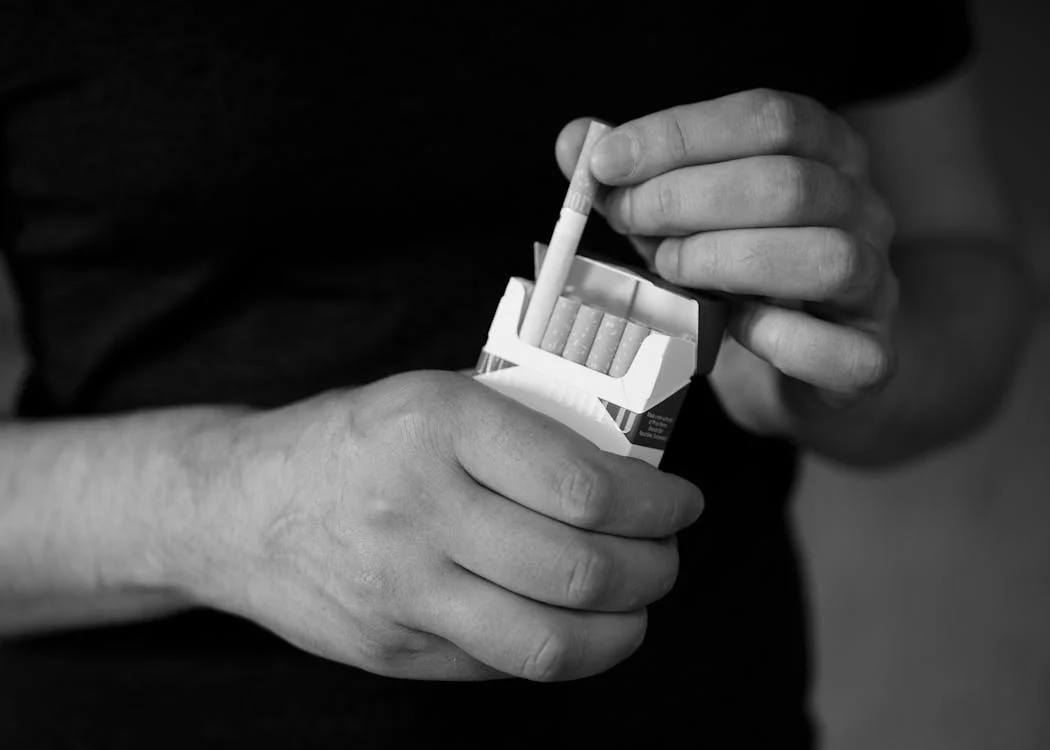Question:
What Are the Fake Cigarettes That Actors Use?
(By Carmichael Phillips)
 (Photo: Diana | Pexels)
(Photo: Diana | Pexels)
RELATED TOPICS:
Do Actors Really Smoke While Performing?
Do Actors Really Drink Alcohol While Filming?
Smoking has often been used to enhance a character’s persona, set a mood, or ground a story in a specific time period. However, given the well-known health risks associated with smoking, the entertainment industry has turned to alternatives that mimic the look and feel of real cigarettes without the harmful effects. Here’s a look at the types of fake cigarettes that actors use.
Herbal Cigarettes
 (Photo: Pixabay | Pexels)
(Photo: Pixabay | Pexels)
What Are They?
Herbal cigarettes are one of the most common alternatives to traditional tobacco cigarettes. These are made from a blend of herbs, flowers, and other plant materials that are rolled in paper, similar to a real cigarette. Common ingredients in herbal cigarettes include marshmallow leaves, rose petals, clover, and other natural substances. They are nicotine-free and do not contain the harmful chemicals found in tobacco products.
Why Are They Used?
Herbal cigarettes are popular because they produce smoke and can be handled just like real cigarettes, making them ideal for scenes that require a realistic portrayal of smoking. Since they don’t contain tobacco, they are less harmful to the actors and crew. However, while they are a safer alternative, some actors still find them irritating to the throat and lungs, and they can still pose a fire hazard.
Examples:
Herbal cigarettes are often used in period films or shows where smoking is integral to the character or setting, such as in “Mad Men” or “The Crown.” These productions use herbal cigarettes to maintain authenticity without compromising the health of the cast.
Prop Cigarettes
 (Photo: Kampus Production | Pexels)
(Photo: Kampus Production | Pexels)
What Are They?
Prop cigarettes are non-functional, realistic-looking replicas of cigarettes. They are typically made from materials like plastic, paper, or other synthetic substances. Unlike herbal cigarettes, prop cigarettes do not produce smoke and are used purely as a visual prop. They are often used in scenes where the appearance of holding a cigarette is necessary, but actual smoking is not required.
Why Are They Used?
Prop cigarettes are the safest option for scenes where smoking is depicted, as they eliminate any health risks or fire hazards. They are particularly useful in scenes where the cigarette is not actually smoked but is used as a character accessory or held for effect.
Examples:
Prop cigarettes are commonly used in theater productions where live smoking is prohibited by law or by the venue. They are also used in film and television when a scene requires a quick shot of a cigarette without the need for smoke.
Electronic Cigarettes (E-Cigarettes)
 (Photo: Radu Florin | Pexels)
(Photo: Radu Florin | Pexels)
What Are They?
E-cigarettes, also known as vaporizers or vapes, are battery-powered devices that heat a liquid (usually containing nicotine, flavorings, and other chemicals) to create a vapor that the user inhales. In the context of film and theater, special e-cigarettes are sometimes used that contain only harmless ingredients and produce a vapor that mimics smoke.
Why Are They Used?
E-cigarettes are used when a scene requires the appearance of smoking with the added element of “smoke” that is produced without the harmful effects of traditional cigarettes. They are less harmful than tobacco cigarettes and can be used in environments where real smoking is prohibited. However, because they still involve inhaling vapor, some actors may prefer not to use them.
Examples:
E-cigarettes are sometimes used in modern films and TV shows where a character smokes, but the production wants to avoid the health risks associated with traditional or herbal cigarettes. They provide the visual effect of smoking without the actual smoke.
Digital Effects

What Are They?
Digital effects involve the use of computer-generated imagery (CGI) to add the appearance of smoking in post-production. No actual cigarettes, herbal or otherwise, are used during filming. Instead, actors perform the scene without smoking, and the cigarette and smoke are added digitally in post-production.
Why Are They Used?
Digital effects are the most health-conscious option, as they completely eliminate the need for any physical smoking on set. They are particularly useful in situations where the actor cannot or does not want to smoke anything at all, even herbal cigarettes. However, this method requires additional time and resources in post-production, making it a more expensive option.
Examples:
Digital effects are increasingly used in big-budget films where smoking is a part of the character’s behavior, but the filmmakers want to avoid the negative implications of actual smoking. It’s a popular choice in scenes requiring extensive visual effects.
Gum or Candy Cigarettes
 (Photo: Karyna Panchenko | Pexels)
(Photo: Karyna Panchenko | Pexels)
What Are They?
Gum or candy cigarettes are novelty items that resemble real cigarettes but are made entirely of edible materials. These were once popular as children’s candy, though they have largely fallen out of favor due to concerns about promoting smoking to young people. In film and theater, they can be used as a non-smoking alternative for scenes where the cigarette isn’t actually lit or smoked.
Why Are They Used?
Though less common than other alternatives, gum or candy cigarettes might be used for comedic effect or in scenes where a cigarette is needed as a prop but does not need to be smoked. These items provide the visual of a cigarette without any smoke or health risks.
Examples:
Gum or candy cigarettes might be used in period pieces or parodies where the character’s smoking is meant to be more symbolic or humorous rather than realistic.



